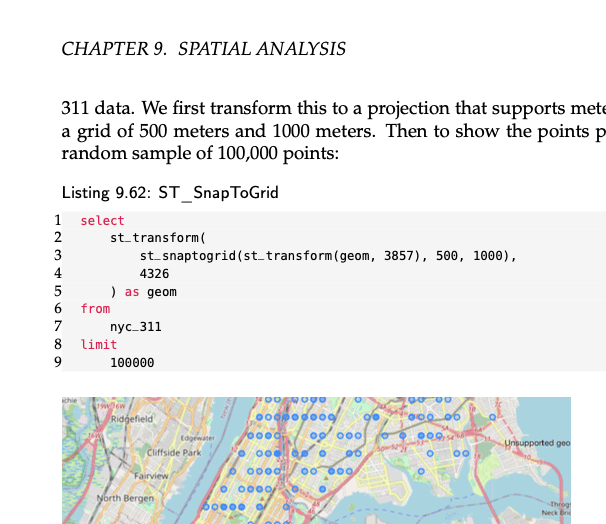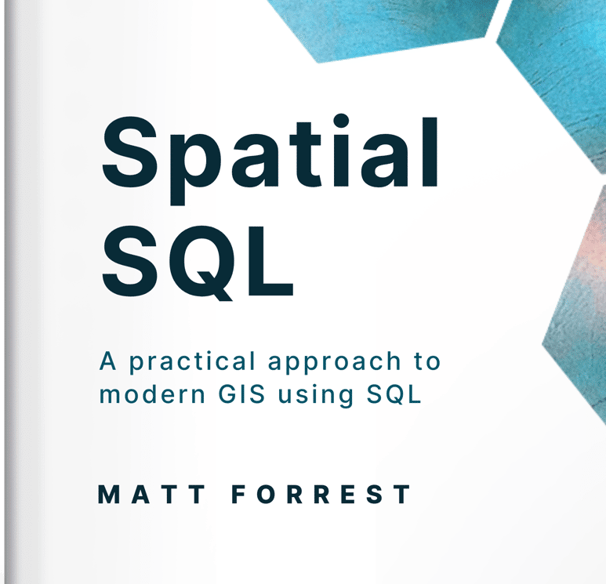Master Spatial SQL
Unlock the power of Spatial SQL with this comprehensive guide


About the Book
Learn how to use Spatial SQL to analyze and manipulate geographic data. This book covers everything from basic spatial queries to advanced spatial analysis techniques all using SQL. Even if you don't know how SQL, this book starts from the beginning all the way to advanced queries.


What's in the book
INTRODUCTION
Why SQL?
CHAPTER 1
The evolution to modern GIS, why spatial SQL matters, and the spatial SQL landscape today
CHAPTER 2
Setting up
Installing PostGIS with Docker on any operating system
CHAPTER 3
Thinking in SQL
How to move from desktop GIS to SQL and learn how to structure queries independently
CHAPTER 4
The basics of SQL
Import data to PostgreSQL and PostGIS, SQL data types, and core SQL operations
CHAPTER 5
Advanced SQL
Statistical functions, joins, window functions, managing data, and user-defined functions
CHAPTER 6
Using the GEOMETRY
Working with GEOMETRY and GEOGRAPHY data, data manipulation, and measurements
CHAPTER 7
Spatial relationships
Spatial joins, distance relationships, clustering, and overlay functions
CHAPTER 8
Spatial analysis
Recreate common spatial analysis "toolbox" tools all in spatial SQL
CHAPTER 9
Advanced analysis
Data enrichment, line of sight, kernel density estimation, and more
CHAPTER 10
Raster data
Importing, analyzing, interpolating, and using H3 spatial indexes with raster data in PostGIS
CHAPTER 11
Suitability analysis
Importing, analyzing, interpolating, and using H3 spatial indexes with raster data in PostGIS
CHAPTER 12
Routing with pgRouting
Routing for cars and bikes, travel time isochrones, and traveling salesperson problem
CHAPTER 13
Spatial data science
Spatial autocorrelation, location allocation, and create territories with PySAL in PostGIS
CONCLUSION
Sign up for updates and release information


Join the LocatePress newsletter for updates and information about the book
